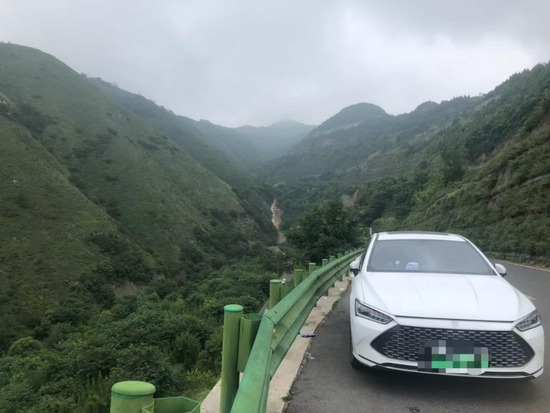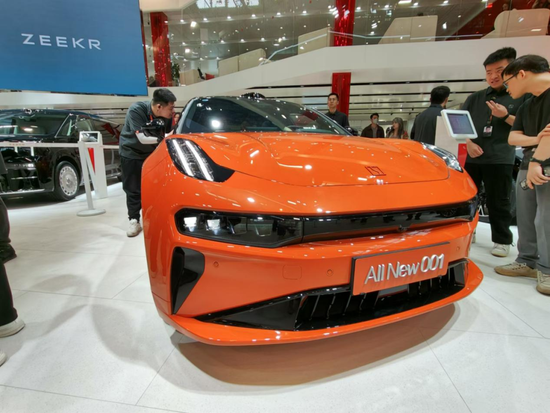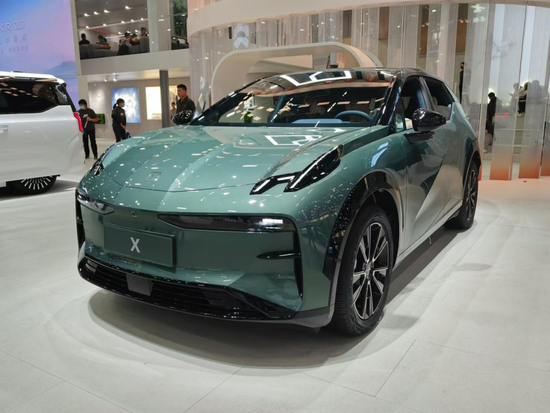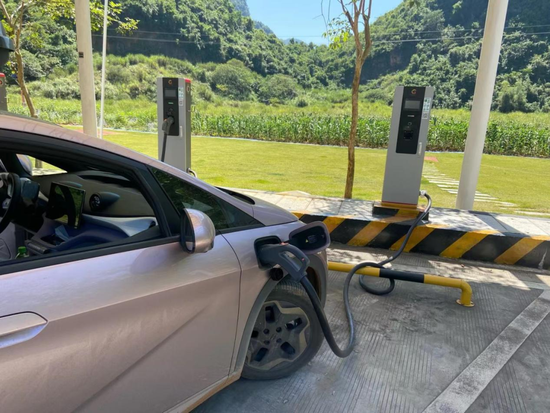Recently, the Ministry of Industry and Information Technology and four other departments issued a notice on the 2024 New Energy Vehicles Going to the Countryside campaign. A total of 99 “suitable for rural markets, well-reputed, and reliable quality” models will be exhibited from May to December for consumers to test drive, offering direct discounts to rural areas. China’s vehicle-going-to-the-countryside policy dates back to 2009, from fuel cars to new energy cars, from subsidies for light goods to purchasing small microvans, to now even the Xpeng P7 starting at 269,000 yuan (37140$) is going to rural areas. As the promotion of new energy vehicles going to the countryside continues, will this policy bring market stability, new drive for capacity digestion, or industry bubbles and temporary prosperity?
In the past: From fuel vehicles to new energy, sales increased by 169% Car going to the countryside is not new anymore. In 2009-2010, China carried out the fuel vehicle going to the countryside activity. At that time, the country arranged 5 billion yuan subsidy funds specifically for rural scrapped three-wheeled vehicles and low-speed trucks to purchase light-duty trucks and buy micro cars with a displacement of 1.3 liters or less, providing one-time financial subsidies. For a while, vans like Wuling Sunshine, suitable for rural use, drove into the vast countryside of China, injecting a shot in the arm into the car market at that time. It is not difficult to understand that as a large durable consumer product, cars can bring great convenience to our people’s lives, driving and riding in cars can greatly improve the happiness of the people. With the acceleration of urbanization and the increase in environmental awareness, the popularity of new energy vehicles in cities is increasing year by year.
– New energy vehicles have a domestic retail penetration rate of 43.7% in April this year, while in rural areas it is only 17%. – The rural market is still a vast “blue ocean” with great potential. – Against this backdrop, the promotion of new energy vehicles in rural areas has become a new hot topic. – Since July 2020, the Ministry of Industry and Information Technology, the Ministry of Agriculture and Rural Affairs, the Ministry of Commerce, the National Energy Administration, and other departments have been promoting the penetration of the new energy vehicle consumption market in rural areas for four consecutive years. – This policy has shown immediate results. Sales of new energy vehicles in rural areas have increased by 80%, 169%, and 87% year-on-year in the second half of 2020, 2021, and 2022, respectively. – While these numbers are promising, the promotion of new energy vehicles in rural areas in recent years has not only brought new growth points for new energy vehicle enterprises, but has also fundamentally changed the perception of automobile consumption in rural areas. – With more relatives, friends, and neighbors in rural areas driving new energy vehicles, the awareness of new energy vehicles in rural areas is gradually changing from doubt to acceptance, and there is a growing tendency to choose new energy vehicles.
Rural areas welcome high-end electric vehicles this year. The list of new energy vehicles for rural areas includes 99 models, a significant increase from the 69 models in 2023. The list features well-known brands such as Hongqi, Volkswagen, Toyota, BYD, Lixiang, Baojun, Wuling, Haval, Geely, Wuling, and Nezha. Manufacturers range from BYD, Geely, Xiaopeng, and Sitech to joint venture brands like FAW-Volkswagen and Dongfeng Honda. The models cover sedans, SUVs, MPVs, and pickups.
Shooting at the Mirror Observation Platform.
Source/Mirror Observation Platform Shooting An especially noticeable trend is high-value vehicles moving from cities to rural areas. For example, this year, Xiaopeng G6 replaced G3i, and Jike 001 and Jike X were also selected for the first time. It can be seen that as the attention and acceptance of new energy vehicles gradually increase in rural areas, the relatively higher-end models under new forces brands are also rushing to the countryside. Jike’s first selection is definitely a starting point. In the follow-up activities of new energy vehicles going to rural areas, domestically produced Tesla Model 3, Model Y, and even NIO, Ideal, and Xiaomi SU7, entering the list of new energy vehicles going to rural areas is not entirely impossible. At the same time, with the dual policy impact of new energy vehicles going to rural areas and the lifting of the ban on pickups, the 2024 list also began to show the presence of new energy pickups such as Great Wall Fengjun EV and Commercial Cannon EV. With the introduction of more new energy pickups, perhaps in the 2025 list, more names of new energy pickups will be seen. Looking at the population structure of families in rural areas, MPVs are obviously more suitable for rural areas with more “large families.” In the future, MPVs may also have a place in the list of new energy vehicles going to rural areas. In fact, rural areas have unique advantages in the development of new energy vehicles compared to cities. For example, in urban areas where land is scarce, private charging piles cannot be widely popularized due to restrictions on parking spaces, power supply facilities, etc. New energy vehicle owners have to rely on public charging piles. The situation in rural areas is just the opposite. Most rural areas have conditions with exclusive courtyards, their own parking spaces, and if they can use 220V sockets for charging, consumers no longer have to worry about charging anxiety. In reality, most new energy vehicle models on the market can be charged with 220V household electricity through simple conversion, making rural areas more adaptable to new energy vehicles. By sorting out the selected models, it is not difficult to find that most of the vehicles going to rural areas have large space, relatively affordable prices, and are in line with the purchasing power of the rural market. Considering the usage scenarios of rural consumers, rural vehicles often carry more passengers and occasionally need to carry some production tools, naturally requiring higher space, while the requirements for car interior and intelligence will be slightly lower.
Meaning: Practical and virtual, actual and symbolic significance are equally important Starting from the national macro policies, the implementation of the policy of new energy vehicles going to the countryside has both practical and symbolic significance, and the two complement each other. From the practical perspective, facing the rapid growth of the new energy vehicle industry and the potential problem of overcapacity, the policy of going to the countryside can effectively expand market demand, especially for the vast rural market, digest overcapacity, and maintain the healthy development of the industry. In order to cooperate with the new energy vehicles going to the countryside, accelerating the construction of rural charging infrastructure has become crucial, not only solving the worries about the use of new energy vehicles, but also promoting the upgrading and transformation of rural power grids and optimizing energy structure. Industry insiders generally believe that with the continuous expansion of the influence of going to the countryside activities, the new energy vehicle market will further sink, which will effectively drive the construction of charging infrastructure and maintenance service networks. In addition, with its lower operating costs, new energy vehicles have improved the travel efficiency and quality of life of rural residents, while also raising the level of modernization in rural areas. The policy of going to the countryside has driven the development of new energy vehicles and related industrial chains, such as charging pile installation, maintenance, battery recycling, etc., creating new employment opportunities for rural areas and promoting diversified development of the local economy. From a symbolic perspective, new energy vehicles going to the countryside symbolize that technological progress is benefiting a wider range of people, and are also part of modern agriculture and smart rural construction. It is also an important measure for the Chinese government to promote green development strategies and achieve the goals of “peak carbon dioxide emissions” and “carbon neutrality”, symbolizing the country’s firm commitment to sustainable development. Encouraging rural consumers to accept new energy vehicles is the popularization of green consumption concepts and the modernization transformation of rural residents’ lifestyles, reflecting the upgrading of rural consumption and social progress. New energy vehicles going to the countryside have narrowed the gap between urban and rural transportation methods, promoted the integration of urban and rural areas, and also helped promote social equity and regional balanced development.
Source/Jingguan Tai shooting New energy vehicles going to the countryside also face challenges, such as consumer awareness needing to be updated, incomplete rural charging facilities, and controversies over the cost-effectiveness of selected models. However, these issues do not mean that new energy vehicles going to the countryside will become a market bubble of false prosperity. On the contrary, these shortcomings point out specific obstacles that need to be overcome in policy implementation, indicating the direction for improvement in subsequent work. Through continuous policy optimization, market education, and infrastructure construction, new energy vehicles going to the countryside are expected to become an important driving force for promoting the sustainable development of China’s new energy vehicle industry and rural economy and society. *Image source: Visual China. *Disclaimer: In no event shall the information or opinions expressed in this article constitute investment advice to anyone.






